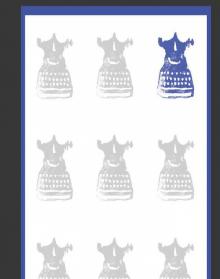- Home
- Alec Waugh
The Sugar Islands Page 12
The Sugar Islands Read online
Page 12
To those who are interested in the question of the slave trade that handbook is an invaluable informant. Its argument that the slaves are the most valuable part of a plantation is usually overlooked by those who dilate on the cruelty of plantation life. A negro was worth between a hundred and a hundred and fifty pounds. One does not by wanton cruelty lessen the value of one’s property. On the well-run estates the negro was happy and well cared for. He had his own hut, his own garden, whose produce he could sell and from which he could make enough to purchase his freedom if he cared. His old age and his children were provided for. The negress would show her babies proudly to her master. ‘Good nigger boy to work for Massa,’ she would say. There were a number of suicides, but that was due to the negro’s belief that when he died he would go back to Africa. In some plantations you would see cages containing severed hands and feet. This was not a warning of future punishment; it was a proof to the negro that though the gods of Africa might be able to transport to Africa the bodies of the dead, they could not transport the limbs that the white man had cut off. ‘Do you want,’ said the planter, ‘to go home without hands and feet? Why not wait till you die of old age and can return there complete; for I shall certainly cut off the hands and feet of every one of you that kills himself.’
There were punishments, and brutal punishments, but they were used in an age of punishment, when the flogging of sailors and soldiers was regarded as a necessary piece of discipline. Examples had to be made in a country where the white man was outnumbered by the black in the proportion of ten to one. The catalogue of punishment that Vassière has patiently amassed would make the Marquis de Sade envious. Such punishments, however, were exceptional. Bryan Edwards was of the opinion that the condition of the slave in the West Indies was no worse than that of the European peasant. Nor, though he suggests that the avariciousness of the French made them overwork their slaves, did he consider that the French planters were any less considerate to their slaves than the Spanish or English were.
Two facts, however, contributed to make San Domingo a more likely stage for disturbance than Barbados and Jamaica. The first that the French, though good colonists, are never really happy out of France. The second that the French system of the kept mistress led to a far more rapid growth of the mulatto class in San Domingo than in the English islands. The French never made their homes in the West Indies. They lived in large houses, in conditions of great luxury, attended by many slaves; but their halls were bare. They had no fine furniture, no pictures, no rich brocades. It was not worth the trouble, they said. They were there for so short a time. Their talk was of France; of their last visit there; of how soon they could return. Their one object was to live in Paris on the profits of their estates. And it was on the estate supervised, not by the owners but by overseers that the atrocities were committed. It was the absentee system that was responsible for the barbarities of West Indian life. There were many such estates in San Domingo.
There were also the mulattoes. They were rich; they had been educated in Paris; they were numerous. By the end of the eighteenth century a tenth of the French part of the island was in their hands. They had a grievance. In spite of their numbers, their riches, their education, they were allowed no voice in the government of their island. They could occupy no official position. They could get no redress from justice when they were assaulted or insulted by the petits blancs, the clerks and adventurers, the registrars of estates, dissolute and incompetent, whom the mulattoes knew to be their inferiors, whose acquaintance they would have derided in France, but who here could order them and outrage them because of that quartering of savage blood.
Nowhere was the colour line drawn more strictly than in Colonial France. Colour precluded a man from every right of citizenship. Nowhere were the distinctions of colour defined more exactly. Moreau St. Méry has catalogued the two hundred and fifty different combinations that interbreeding may produce. The man who was four-fifths white was incontestably superior to the man who was three-quarters white. But as long as there remained a drop of coloured blood a man was debarred the rights of citizenship. The mulattoes were very conscious of their grievance. They were rich; they were educated; they were well-bred; they carried in their veins the blood of the oldest families of France, of the healthiest and handsomest of the imported Africans. The half-caste is usually despised because he is a mixture of bad blood, of bad black and of bad white. The mulattoes of San Domingo, however, combined the best of France with the best of Africa—a mixture to which most of what Haiti has achieved is due. Such men found intolerable the insults of the petits blancs. In Paris they were respected; why should they be despised in their own country?
Many were the complaints that they addressed to the French Government. But the French Government, blind though it was to the interests of its colonists at many points, supported them in this. ‘The colour line,’ insisted the Whites, ‘must be maintained. We are outnumbered by the Blacks in the relation of ten to one. We must uphold our prestige. We are superior to the mulatto. And by refusing to countenance the claims of the mulatto we must keep this fact before the Blacks. Our prestige once lost, we should be powerless.’ The Government upheld its colonists.
It was, however, one of the few points in which it did. The Creole Whites had grievances. In the same way that the English Government had regarded its American colonies as nothing more than a profitable source of revenue to itself, so did the bureaucrats of Paris enforce harsh and tyrannical regulations on its colonial trade. Produce might only be carried in French ships and to French ports. Duties were levied at excessive rates. The Planters grumbled. Everyone was grumbling. Everyone had a grievance of some sort.
Then came the revolution.
The story of those early months are too confused to be told in précis. To be understood they must be read in some such detailed study as Lothrop Stoddard’s. In Paris there was a government that changed its mind only less often than it changed its leaders, that sent out commissions and recalled them, that imprisoned the colonial representatives as traitors, that one month passed an Act abolishing slavery and the next repealed it. There was a society called Les Amis des Noirs, very few of whose members had ever seen a negro, demanding the cancelling, with every distinction of class, of Moreau St. Méry’s two hundred and fifty carefully compiled distinctions. There were the absent French owners, suspect as aristocrats, asserting that only on the old colour basis could the allegiance of the colonies be maintained, and Robespierre thundering back that it was better to lose a colony than a principle.
In San Domingo there were the planters, several of them aristocrats by birth, all of them aristocratic by sympathy, terrified at the thought that everything they had believed in was being taken from them: the constitution and the King of France, the tradition of colonial rule, the bar of colour. There were the bureaucrats sent out from France, ignorant, prejudiced, distrustful of everyone who sympathized with the old regime. There were the petits blancs, a worthless and crafty lot, knowing that there was nothing for them to lose, trusting that any commotion might be turned to their advantage. There were the mulattoes supporting the National Assembly, believing that at last they were to be recognized as their fathers’ children. And there were the slaves, stupid and misinformed, vaguely aware that there was an idea about that they should knock off work.
A confused and hectic story, with the planters gradually losing faith in the French Government, deciding, with the example of the American colonies before them, on independence, appealing to the English to protect them; with Paris losing interest in its colonies; with the slaves rising and slaughtering their owners; with the mulattoes desperately appealing to the slaves to combine with them against the Whites; with English troops occupying Port au Prince and the Mőle St. Nicolas; and the Spanish pushing across from the west into the plain of the Gonaïves, and every man’s hand against his neighbour’s.
A confused and hectic story, from which emerges finally the figure of Toussaint l’Ouverture.
>
Few people have received more extravagant adulation. Certainly he was a remarkable man. A self-educated negro, he was carried by circumstances on the crest of a mounting wave.
From the leadership of a band of insurgent slaves, he was swept to the generalship of an army. He drove the English out of San Domingo, annexed the Spanish section of the island, defeated the mulattoes of the south who had risen under Rigaud, in protest against black domination, and declared himself dictator. Then, with peace established in two years, he restored the island to something of its former prosperity. He returned the negroes to the plantations, and under the ruthless supervision of his generals restored a condition of industry unapproached during the days of the French planters. He was a remarkable man. But it is only the light of history falling upon him from a certain angle that has made him appear a hero.
Because he was self-educated, he has been called a genius. Because he spared the master who was kind to him he has been called human. Because he drove the English out of Haiti he has been called a patriot. Because he restored prosperity to the island he has been called a statesman. Napoleon’s treatment of him has made him an object of pity. He was captured in a time of peace by treachery, shipped and left, the liberator and preserver of San Domingo, to die in a dark cell, without trial, in France.
That is one side of the picture. There is the other. Toussaint was the descendant of an African prince. He was born with the power to rule, with intelligence to develop his capacities. In time of revolution, for a man of force the stride is a short one from corporal to general. Toussaint was a good soldier, with the power to command. There are no signs in his character of any particular nobility. A great many negroes saved their masters. The negro is generous and remembers kindness. Toussaint was not trustworthy. He went where his interests led him. He was concerned with one thing only: the freedom of the Blacks. He began by fighting for the Spaniards. Then, on realizing that he would fare better with the French, he took his forces to the other side. During his long struggle with Rigaud he offered the island to the English in return for help. At the same time he was talking to the French of the sotte crédulité of the English. Neither side trusted him. After signing peace with Leclerc, he continued to plot against the French. He had to be got out of San Domingo; and Napoleon was practical. It was as well to let die in prison those who can do you no good and may do you harm.
Toussaint was a big man. But he appears important only because he was a forerunner; because Dessalines and Christophe followed him, in the same way that Marlowe’s stature is increased by being the pedestal for Shakespeare. He did little more in San Domingo than Pélage did in Guadeloupe, and had Napoleon’s expedition against San Domingo succeeded as rapidly as his other one against Guadeloupe, I believe that Toussaint would have seemed as inconsiderable an historical figure as Pélage.
Nor was it on account of Toussaint that the San Domingo expedition ranks as the chief failure of Napoleon’s early career.
Fifteen years later at St. Helena Napoleon was to describe the San Domingo expedition as a great mistake. But at the time there were reasons enough for undertaking it. The Treaty of Amiens had been signed. He was at peace with Europe. He had sixty thousand troops that he would be glad to have out of France. San Domingo had been the richest island in the New World. He had need of money. The old proprietors in Paris were beseeching him to recover their possessions. The troops who had swept so easily across Europe and Egypt could surely cope with a brigand chief. There were reasons enough for believing that the expedition would succeed. And it might have done very easily.
As easily as did his other expedition to Guadeloupe. Side by side the two expeditions were sent across the Atlantic with similar instructions. The black leaders were to be cajoled, flattered, confirmed in their ranks; then when the French Army and French rule had been established the black leaders were to be returned to France; as prisoners if they had been obstinate, to serve in the French Army had they been obedient. To Guadeloupe he sent Richepanse; to San Domingo, his brother-in-law Leclerc, ‘a fellow almost damned in a fair wife’.
Napoleon had planned the campaigns himself. In Guadeloupe he was to succeed immediately. Richepanse landed, paraded the coloured forces, complimented them on their courage, thanked them in the name of the Consul-General, explained that he wished them to board his ships so as to transport them further down the coast, marched them on board and into a hold, on which he closed the hatch. In a few hours Guadeloupe was his and Pélage on his way to France to serve in the French Army, to die in Spain, to pass out of history.
Things went less to plan in San Domingo.
And at St. Helena Napoleon was to blame himself. He was also to blame Leclerc. But the impartial historian can only reproach Leclerc with one real mistake, his attitude to Christophe, the general of the north. He might at one bold blow have taken Cap François, or he might by skilful diplomacy have overcome the black general. He delayed assault, however, and sent as an ambassador Lebrun, an ignorant, ill-bred popinjay who later, on a diplomatic visit to Jamaica, was so outrageously ill-mannered as to merit a reprimand from Nugent. It is hard to think how Leclerc could have chosen such a one as his aide-de-camp. Lebrun was handsome. Possibly he was Pauline’s choice.
Christophe could have been won over. As it was, distrustful and offended by Lebrun’s tactlessness, he burnt Cap François and fled into the hills. By the time that he and the other generals had surrendered into the acceptance of commissions as French generals, Leclerc had lost half his men.
Even so, for the moment it looked as though the French had won. Toussaint had been shipped to France. Christophe and Dessalines were generals in the French Army; according to Napoleon’s plan, they, too, should have been sent back. But fighting once started is hard to stop; the hills were filled with untamed brigands. Leclerc could not risk the loss of his troops in guerilla warfare. Bandits had to be set against bandits. Christophe and Dessalines were the only men that he could trust. He had to keep them on. ‘A little while,’ he thought, ‘a little longer. When the last brigand has been captured, then will I send Dessalines back to France.’
But the dice were loaded against Leclerc. Long before the last brigand had been brought in, yellow fever, decimating his men, had broken out along the coast, and before the epidemic was at an end the news had come from Guadeloupe that slavery had been re-established there.
It was the news from Guadeloupe that decided the San Domingan expedition, decided by uniting with a common dread not only the black but the mulatto forces. Until then the black forces of San Domingo had consisted of three armies; the mulattoes of the south, the centre under Dessalines, the north under Christophe. There had been no true combination. The generals had fought and acted independently of each other. Christophe had indeed made a separate peace with Leclerc. The news that slavery was re-established in Guadeloupe, with the certainty that it was the plan of the French to restore slavery in San Domingo, united the black forces. Christophe and Dessalines went back into the hills, and with them Pétion, the mulatto general who had been Dessalines’ chief opponent in the early war.
For the next three years Dessalines’ and San Domingo’s become one story.
Today Dessalines is Haiti’s hero. Streets and cigarettes are christened after him. His tomb is in the Champ de l’Indépendence. His statue faces the Chapel of Cap Haïtien. In Port au Prince it brandishes a sword in face of the green-roofed houses, the dim outline of Gonave. The visitor in Port au Prince will gaze wonderingly at that statue. He will scan the aristocratic, thinlipped, straight-nosed face below the cockaded hat, and he will ask himself where in those bloodless features the signs of savagery are concealed. He may well ask himself. It was never for ungentle Dessalines that that mask was cut. It was ordered by a Central American president who was cast out of office before the statue could be delivered. His fall coincided with the arrival in Paris of a delegation from Haiti to commission a statue of Dessalines to celebrate the centenary of Haitian independence. As t
here was a statue going cheap they took it. That was the way they did things in Haiti then. And, indeed, they might well have found a statue less symbolic of the tiger. As you sit at twilight on the veranda of the El Dorado, the outline of the cockaded hat and the thin curve of the brandished sword is dark and ominous against the scarlet sunset. They are the last things you see as the swift dusk settles on the Champ de Mars.
Today Dessalines’ many brutalities are forgiven and forgotten. There was much to forget and to forgive. In Haiti’s bloodstained story he is the most ruthless figure. He was a great fighter and he loved fighting. As long as he was fighting he did not much mind whom he fought. As long as he was killing he did not much mind whom he killed. In the intervals there were women. But women were a side-show.
It is impossible to detect in his behaviour a consistent policy. During the two years of Toussaint’s pacific administration he drove his negroes to work at the sword’s point. During his war with Leclerc he butchered, because they were white, every Frenchman whose property lay across his line of retreat. As a general in Leclerc’s army he was known as the butcher of the negroes, and slaughtered with the liveliest ferocity a hundred blacks because a few French officers had been assaulted. The war he waged with the French when the news of French treachery in Guadeloupe was known is the bloodiest in history. Terrible things happened during those weeks when Leclerc, his body faint and his eyes bright with fever, wrote despatch after despatch to France, and Pauline dangled her pretty toes over the palace wall, her eye fixed broodingly on the green mangroves and the lilac outline of the hills, her ears avid for the caressing words of the young aide-de-camp beside her.

 A Spy in the Family
A Spy in the Family Love in these Days
Love in these Days The Balliols
The Balliols Kept
Kept Fuel for the Flame
Fuel for the Flame Wheels within Wheels
Wheels within Wheels The Sugar Islands
The Sugar Islands No Truce with Time
No Truce with Time My Place in the Bazaar
My Place in the Bazaar Thirteen Such Years
Thirteen Such Years The Loom of Youth
The Loom of Youth A Year to Remember
A Year to Remember A Family of Islands
A Family of Islands Brief Encounter
Brief Encounter Guy Renton
Guy Renton So Lovers Dream
So Lovers Dream His Second War
His Second War My Brother Evelyn & Other Profiles
My Brother Evelyn & Other Profiles The Mule on the Minaret
The Mule on the Minaret Sir!' She Said
Sir!' She Said Nor Many Waters
Nor Many Waters The Fatal Gift
The Fatal Gift Where the Clocks Chime Twice
Where the Clocks Chime Twice Hot Countries
Hot Countries Unclouded Summer
Unclouded Summer Island in the Sun
Island in the Sun